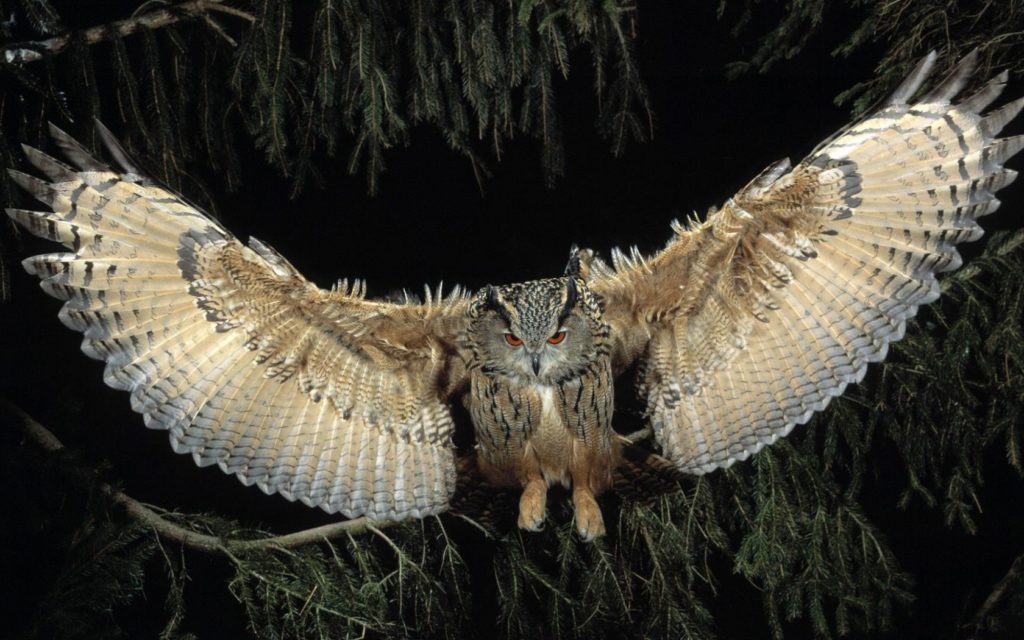Curious Critters: Great Horned Owl

This majestic bird with it’s long, earlike tufts, intimidating yellow-eyed stare, and deep hooting voice, the Great Horned Owl is the quintessential owl of storybooks. This is one of the most common owls in North America, equally at home in deserts, southeast wetlands, mixed forests, grasslands, backyards, cities, and almost any other semi-open habitat between the Arctic and the tropics as well the Smoky Mountains. In the wild, it is common that these birds can live up to 13 years in age. However, the oldest Great Horned Owl on record was at least 28 years old when it was found in Ohio in 2005. Great horned owls grow to lengths of up to 23 inches and weights of as much as 3¼ pounds. But this does not earn them the title of largest and beefiest of all owls, that distinction goes instead to the Great Grey Owl which grows to lengths of 33 inches and weights of over 3 pounds! They have large eyes, pupils that open widely in the dark to capture the most light possible, and retinas containing many rod cells (for better vision in dim light) that adds to their excellent night vision. Their eyes don’t move in their sockets, but they can swivel their heads more than 180 degrees to look in any direction for prey. They also have sensitive hearing, thanks in part to facial disc feathers that direct sound waves to their ears. Great Horned Owls are covered in extremely soft feathers that insulate them against the cold winter weather and help them fly very quietly in pursuit of prey. Their short, wide wings allow them to maneuver among the trees of the forest. While hollow bones help keep this bird light and fast, often sneaking up to prey without a sound. The wing’s serrated leading edge appears to be most effective at reducing noise when the wing is at a steep angle—which would happen when the owl is close to its prey and coming in for a strike.

owls, Owls, OWLS!
Although they are usually nocturnal hunters, Great Horned Owls sometimes hunt in broad daylight. Great Horned Owls have the most diverse diet of all North American raptors. Their prey range in size from tiny rodents and scorpions to hares, skunks, geese, and raptors, including other owls! They eat mostly mammals and birds, typically speaking—especially rabbits, hares, mice, and American Coots. But it’s not uncommon for them to feed on other species including voles, moles, shrews, rats, gophers, chipmunks, squirrels, woodchuck, prairie dogs, bats, skunks (they are the only animal that regularly feeds on skunks), house cats, porcupines, ducks, loons, mergansers, grebes, rails, owls, hawks, crows, ravens, doves, and starlings. They supplement their diet with reptiles, insects, fish, invertebrates, and sometimes carrion, if they need an easy meal. Basically, any and all small woodland creatures living in our ecologically diverse forest here in the Smokies. After spotting their prey from a perch, they pursue it on the wing over woodland edges, meadows, wetlands, open water, or other habitats. They may walk along the ground to stalk small prey around bushes or other obstacles. With so many modes of attack, there is no telling where you might see one out on a hike.
